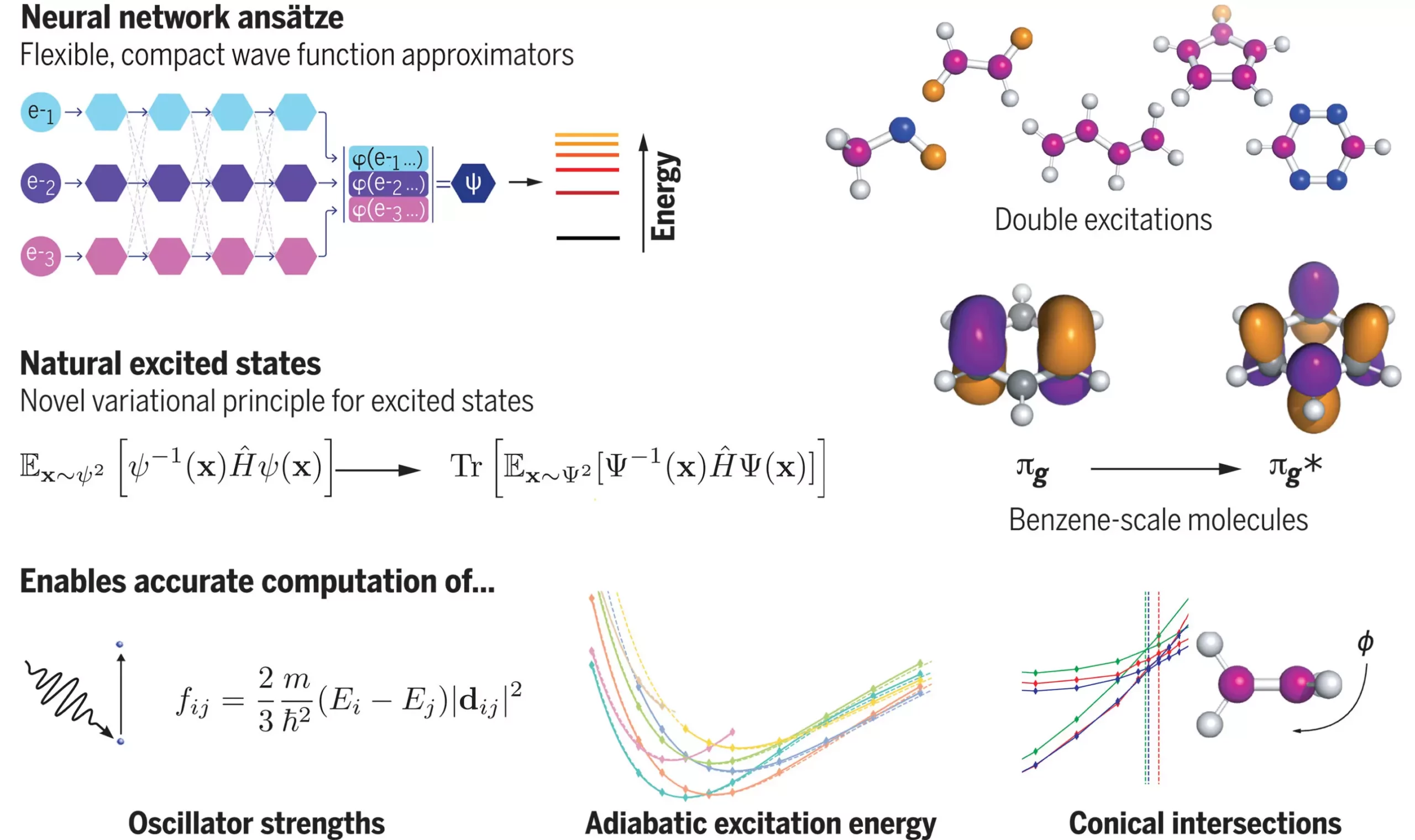Groundbreaking research conducted by a team of scientists from Imperial College London and Google DeepMind has introduced a novel approach to modeling the states of molecules using neural networks. The research, recently published in Science, demonstrates the potential of this technique in solving complex equations within molecular systems. By delving into how molecules transition to and from excited states when exposed to energy, the study opens up new possibilities for computational chemistry and material science.
Understanding the behavior of molecules in excited states presents a significant challenge due to the quantum nature of electrons. When molecules absorb energy, their electrons can move into temporary configurations, known as excited states, creating a unique fingerprint for each molecule. This phenomenon plays a crucial role in various technologies, including solar panels, LEDs, and biological processes like photosynthesis. However, modeling these excited states accurately is hindered by the probabilistic nature of electron positions within the molecules.
Lead researcher Dr. David Pfau highlights the complexity of representing quantum systems, where assigning probabilities to electron configurations becomes a monumental task. To tackle this challenge, the team utilized a deep neural network called FermiNet, a groundbreaking application of deep learning in calculating the energy of atoms and molecules. By leveraging this neural network, the researchers were able to achieve remarkable accuracy in predicting molecular states.
The research team tested their approach on a variety of molecular systems and obtained promising results. Notably, on the carbon dimer molecule, they achieved a mean absolute error of 4 meV, significantly closer to experimental results compared to existing methods. This breakthrough in computational chemistry opens up new avenues for accurately simulating complex molecular systems and understanding their behavior in different environments.
The successful application of neural networks in modeling molecular states paves the way for future advancements in material design and chemical synthesis. By enabling researchers to prototype new materials and chemical reactions through computer simulation, this technology has the potential to streamline the development process and reduce reliance on costly experimental trials. Moreover, the ability to accurately predict molecular behavior could lead to innovations in various industries, from electronics to pharmaceuticals.
The integration of neural networks into computational chemistry represents a significant milestone in the field of molecular modeling. As researchers continue to refine these techniques and explore new applications, the impact of AI-driven approaches on understanding and manipulating molecular states is poised to revolutionize the way we approach material design and chemical synthesis.


Leave a Reply